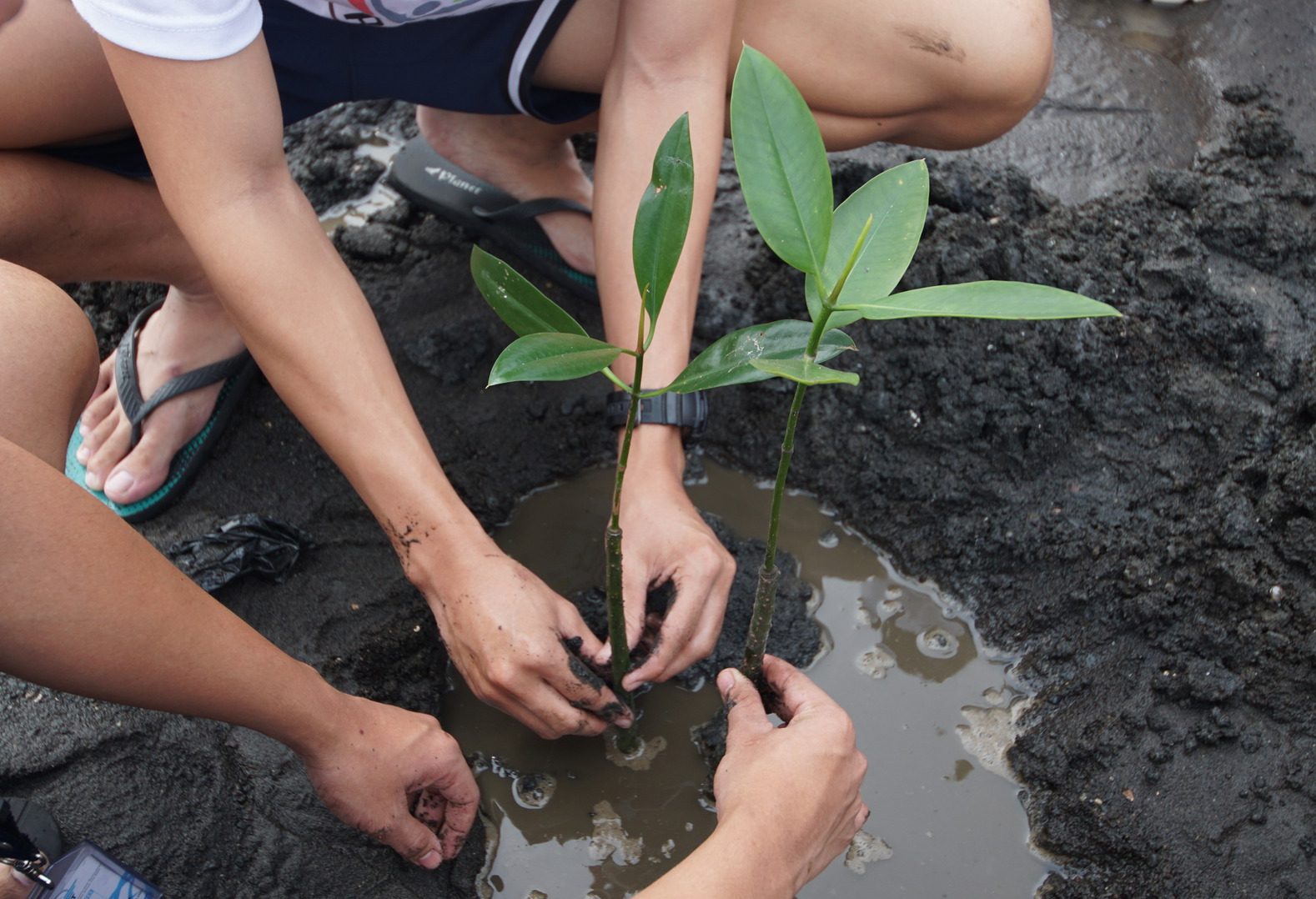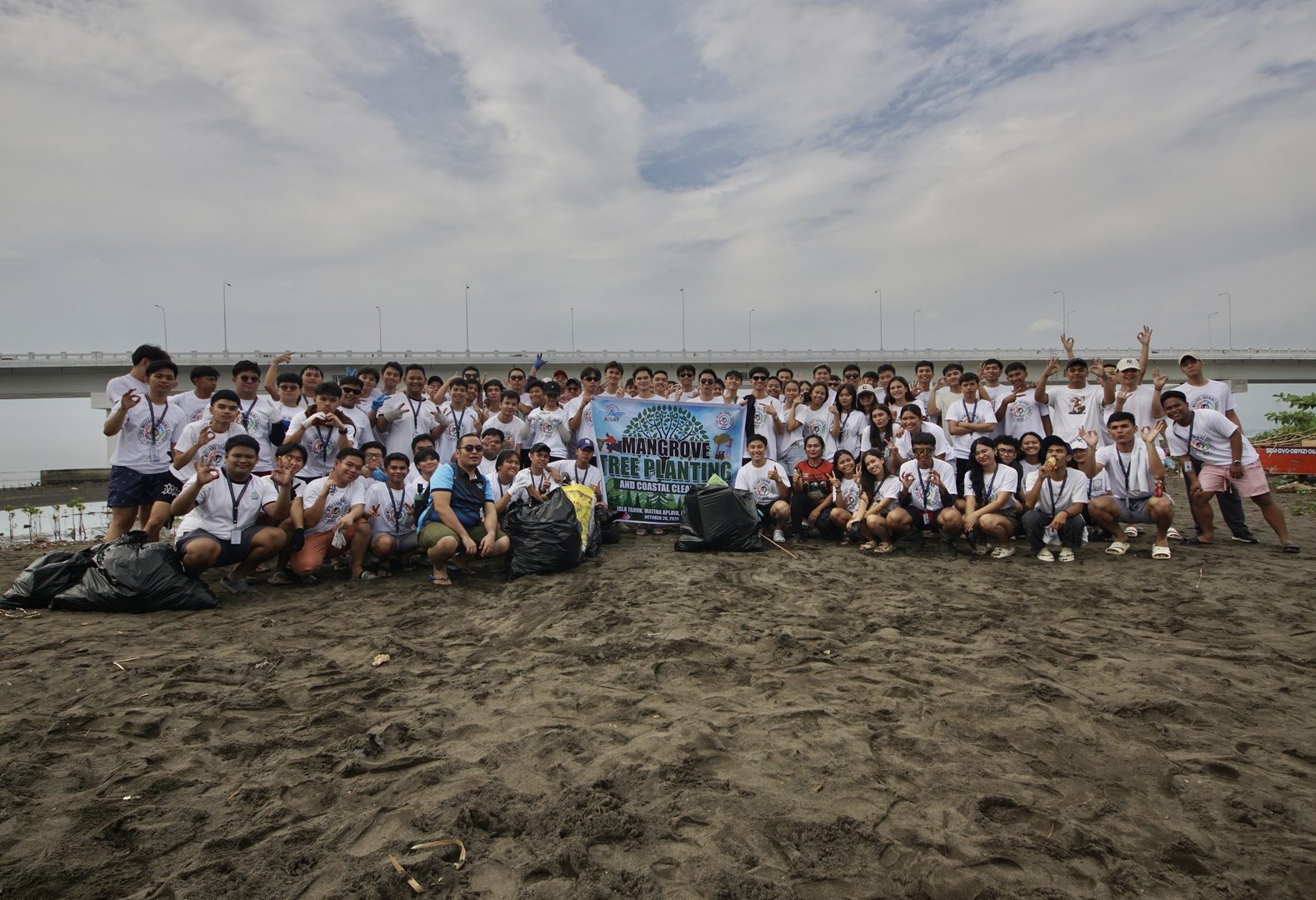October 30, 2024
by Althea Nicole Leoncito
Last October 26, 2024, a group of 97 NSTP-CWTS students led by Mr. Roy Francis A. Berro, AISAT NSTP Coordinator, and with the help of Barangay Officials headed by Mr. Rolando Angcajas, participated in a Mangrove Tree Planting and Coastal Cleanup event in Brgy. 75-A Isla Tabuk, Matina Aplaya, Davao City. The event, known as “Creating a Sustainable Planet Through Coastal Clean Up and Mangrove Planting.” lasted for two hours and was a resounding success, with 250 mangrove seedlings planted and significant trash removed from the coastal area.
The initiative sought to achieve multifaceted objectives in environmental conservation and community engagement. It aimed to bolster coastal resilience by enhancing sustainable livelihoods, promoting fisheries productivity, supporting aquaculture, preserving biodiversity, and increasing carbon sequestration. Then, it aimed to mitigate the adverse impacts of pollution on the marine ecosystem by protecting aquatic animals and plants by removing trash that poses a danger to their survival and well-being.

Mangroves play a critical role in coastal ecosystems, providing habitat for diverse marine species, preventing erosion, and safeguarding the coastline from the destructive forces of storms. These unique trees and shrubs thrive in the intertidal zones of tropical and subtropical coastlines, forming dense forests that serve as nurseries and feeding grounds for fish, crustaceans, and other marine life. Mangroves also help to protect coastlines from erosion by stabilizing sediments with their extensive root systems, reducing the impact of waves and storms (Donato, Kauffman, Murdiyarso, Kurnianto, Stidham, & Kanninen, 2011). Moreover, mangroves play a crucial role in carbon sequestration, storing significant amounts of carbon dioxide in their biomass and sediments, helping to mitigate climate change (Spalding, Kainuma, & Collins, 2010). Studies have shown mangrove forests can store up to four times more carbon than terrestrial forests. Protecting and restoring mangrove ecosystems are essential for maintaining biodiversity, supporting coastal communities, and mitigating the impacts of climate change.
This initiative aligned with a growing global movement of communities taking charge of their environmental well-being –the “Greening the City” project in Melbourne, Australia, where residents, businesses, and local organizations have partnered to transform urban spaces into vibrant green hubs. This project, “Melbourne’s Urban Transformation: Greening the City for a Sustainable Future,” published in The Guardian in November 2024, highlighted the power of community-led initiatives in creating a more sustainable and resilient urban environment. It included planting trees, creating community gardens, and installing green roofs and walls, which will help to improve air quality, reduce the urban heat island effect, and create a more sustainable, livable, and environmentally woke city (Smith, 2024).
This opens a much clearer sense that our actions affect the environment’s health, which is why the power of collective action is needed to drive positive environmental change. When we empower individuals to take ownership of their environment, these initiatives create a ripple effect, inspiring others to adopt sustainable practices and contribute to the collective effort toward environmental conservation. Through these hands-on environmental activities, we are creating a more sustainable future for all.
The event, which began at 7:00 AM and ended at 9:00 AM, saw the participation of 97 students out of the total 105 enrolled in NSTP-CWTS, with 8 students unable to attend. The activities were documented by Mr. Pajuay, a member of the school pub.

